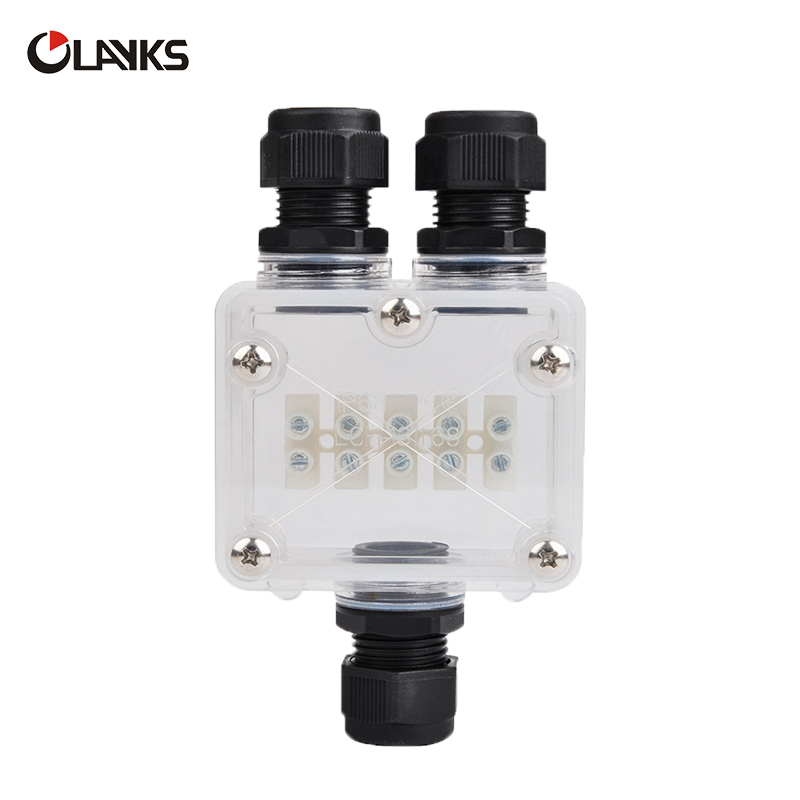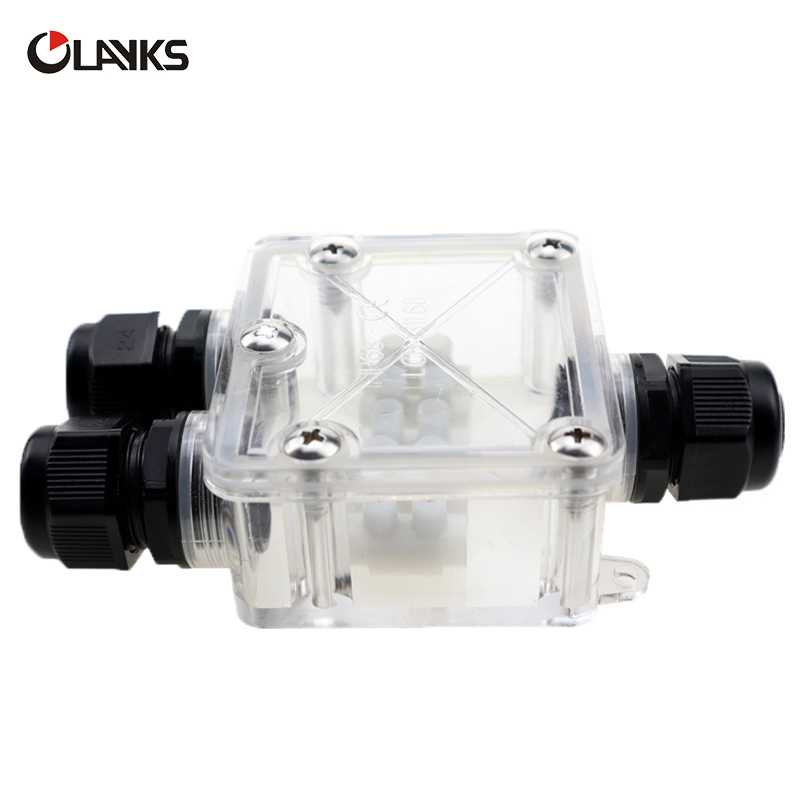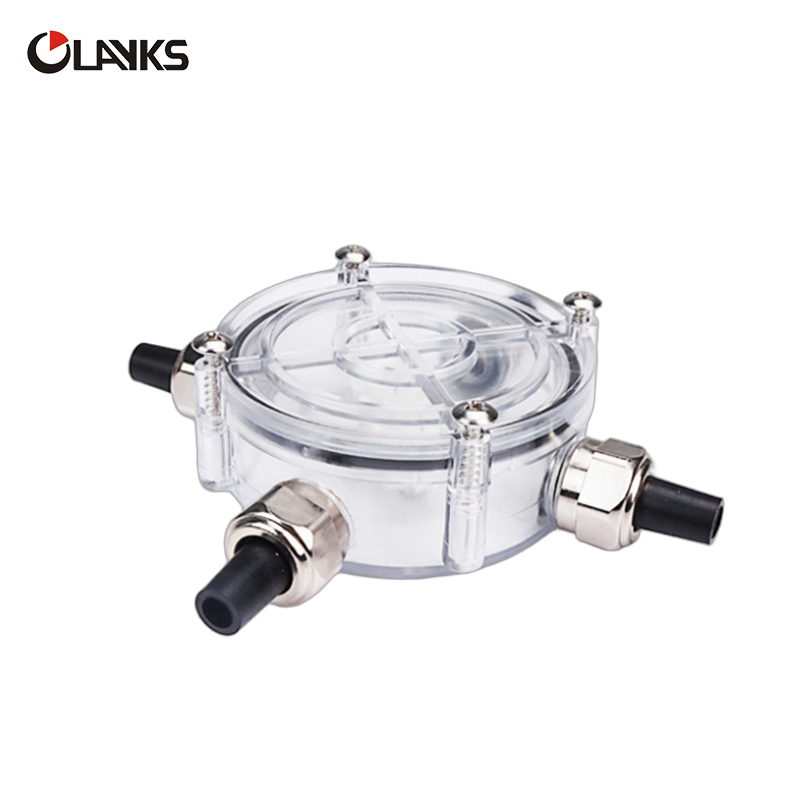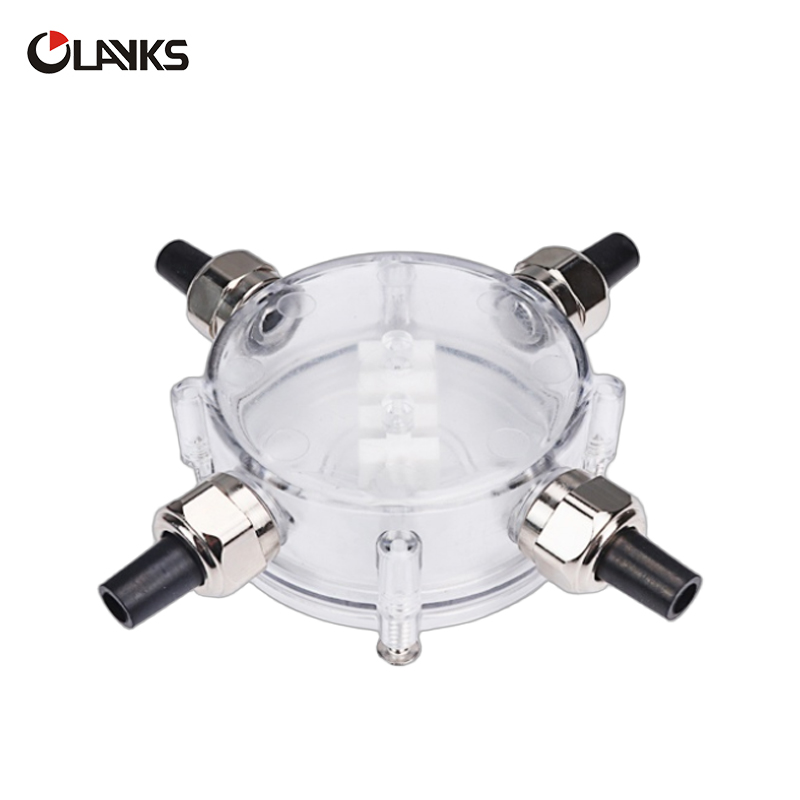summarized:Abstract:The OUYI GM Junction Box represents a pinnacle of design for harsh environment electrical connectivity. This comprehensive technical analysis explores the GM Junction Box's construction, IP68 certification, material science, diverse application scenarios across multiple industries, inst
The OUYI GM Junction Box represents a pinnacle of design for harsh environment electrical connectivity. This comprehensive technical analysis explores the GM Junction Box's construction, IP68 certification, material science, diverse application scenarios across multiple industries, installation best practices, comparative advantages, and its role in addressing modern infrastructure challenges. With an emphasis on real-world performance in extreme conditions – from deep-sea installations and corrosive coastal environments to underground mining and high-UV solar fields – this article provides engineers, project managers, and procurement specialists with the critical data needed to specify and deploy this robust connectivity solution effectively.

Table of Contents:
1.
Introduction: The Critical Role of Protected Connectivity
•
The vulnerability of electrical connections in harsh environments.
•
Consequences of failure: Safety hazards, downtime, maintenance costs.
•
Defining the requirements: Waterproofing, dustproofing, chemical resistance, mechanical strength, UV stability.
•
Introducing the OUYI GM Junction Box as a purpose-built solution.
2.
Product Deep Dive: Anatomy of the GM Junction Box
•
Transparent Lid: Enables visual inspection of connections without opening the box, maintaining seal integrity.
•
Robust Clamping Mechanism: Ensures constant pressure on seals for long-term waterproofing.
•
Cable Gland Compatibility: Designed to integrate seamlessly with standard cable glands (M20, M25, PG7, PG9, etc.) for different cable diameters.
•
Acid & Alkali Resistance: Withstands exposure to industrial cleaning agents, agricultural chemicals, and saline atmospheres.
•
"Non-Tearing": Refers to the resilience of the PC material against cracking or splitting under impact or stress.
•
Wire Section Capacity: 0.5 mm² to 2.5 mm² (AWG 20 to AWG 14).
•
Minimum Wire Size Outer Diameter (OD): Two variants: 5-9mm OD and 9-12mm OD.
•
Supply Voltage Rating: 24A / 450V AC.
•
Wire Connect Type: 3P (3 Positions/Poles).
•
Safety Certifications: Implied compliance with TUV, SAA, CE, RoHS standards (critical for global markets).
•
Breaking down IP Code: "6" (Complete dust ingress protection), "8" (Continuous immersion under pressure - typically >1m depth, specified by manufacturer).
•
Testing Standards (e.g., IEC 60529): What the GM undergoes to achieve IP68.
•
Real-World Meaning: Protection against high-pressure water jets, submersion in floods or enclosures filling with water, dust storms, fine particulate matter.
•
(Diagram: Schematic illustrating IP68 test conditions - dust chamber & submersion tank)
•
Enclosure Material: Polycarbonate (PC) - Properties: High impact resistance (IK rating equivalent), exceptional clarity for visual inspection, inherent UV stability (resists yellowing and embrittlement), good flame retardancy (UL94 V-0/V-2 likely).
•
Seals & Grommets: Silicone or EPDM - Properties: Excellent temperature range (-40°C to +120°C+), permanent elasticity, water resistance.
•
Terminal Blocks/Connectors: PA66 (Nylon 66) - Properties: High mechanical strength, good electrical insulation, resistance to fuels, oils, and many chemicals, creep resistance under load.
•
External Dimensions: 72mm (L) x 65mm (W) x 36mm (H) - Compact yet functional footprint.
•
Internal Volume: Calculating usable space for conductors and terminations.
•
Mounting Options: Wall-mounting considerations and hardware compatibility.
•
(Diagram: Exploded view of GM Junction Box showing components)
•
2.1 Physical Specifications & Dimensions:
•
2.2 Material Science: Engineered for Durability
•
2.3 The IP68 Imperative: Understanding the Rating
•
2.4 Electrical Performance & Specifications:
•
2.5 Key Design Features:

3.
Application Spectrum: Where the GM Junction Box Excels
•
Outside Plant (OSP) Equipment: Protecting connections at cell towers, remote cabinets, or buried enclosures.
•
CCTV & Security Camera Connections: Junction points for power and data cables on poles or buildings.
•
Surface & Underground Mining Equipment: Protection against dust, water, impacts, and vibration.
•
Exploration & Monitoring Equipment: Junction points for sensors in remote, harsh locations.
•
Processing Plants: Connections in dusty, wet, or chemically exposed areas.
•
Underground Utilities: Manhole or pull-box connections prone to flooding (submersion rating critical). Protection during installation and over lifespan.
•
Traffic Management Systems: Signal controller connections, loop detector junctions, VMS signs (exposure to weather, road grime, de-icing salts).
•
EV Charging Stations: Protecting external connections on charging units.
•
Water & Wastewater Treatment: Wet, corrosive environments around tanks and pumps.
•
Marina & Dock Lighting/Wiring: Constant exposure to salt spray and moisture. Critical corrosion resistance.
•
Boat & Yacht Wiring: On-deck equipment connections.
•
Coastal Infrastructure: Boardwalks, observation points, coastal monitoring equipment.
•
Desalination Plants: Protection against highly corrosive saline atmosphere.
•
Outdoor Machinery & Equipment: Food processing equipment washdowns, packaging lines, agricultural machinery (resistance to water jets, chemicals, dust).
•
Control Panel External Connections: Extending I/O points safely outside enclosures.
•
Conveyor Systems: Protection in dusty or humid environments (mines, quarries, ports).
•
Sensor & Actuator Connections: Protecting vulnerable field device wiring.
•
Solar Photovoltaic (PV) Arrays:
•
Small Wind Turbines: Protecting connections at the tower base from moisture and debris.
•
Solar Water Heaters: Connections on roof-mounted units exposed to weather.
•
Combiner Boxes: Protecting connections from multiple PV strings (exposure to UV, heat, rain, snow).
•
Inverter Connections: Final AC connection points often located outdoors.
•
Mounting Structure Wiring: Junction points on trackers or fixed mounts.
•
Case Study: Performance in desert (high UV, sand) vs. coastal (salt spray) solar farms.
•
Outdoor LED Lighting: Streetlights, pathway lights, bollards, architectural facade lighting, tunnel lighting (protection against moisture, road spray, condensation, vibration). Case Study: Reduction in maintenance callouts for municipal lighting.
•
Garden & Landscape Lighting: Spike lights, underwater pond lights, fountain lights (direct burial/submersion scenarios). Case Study: Resort lighting longevity in tropical coastal environment.
•
LED Billboards & Signage: Protecting connections on high-value displays exposed to weather. Importance of UV stability against fading/cracking.
•
Sports Field Lighting: Withstands impact from balls, equipment, and weather.
•

•
3.1 Lighting & Illumination:
•
3.2 Renewable Energy Systems:
•
3.3 Industrial Automation & Machinery:
•
3.4 Marine & Coastal Environments:
•
3.5 Infrastructure & Utilities:
•
3.6 Mining & Resource Extraction:
•
3.7 Telecommunications:
4.
Installation Mastery: Ensuring Optimal GM Junction Box Performance
•
Torque Specifications: Importance of correct gland and terminal block tightening (over-tightening damages, under-tightening leaks).
•
Seal Care: Avoiding nicks, grease, dirt on seals. Never re-use damaged seals.
•
Gland Selection: Never compromise on gland quality or IP rating.
•
Conductor Stranding: Use ferrules on fine-stranded wires for termination reliability.
•
Environmental Sealing: Sealing conduit/conduit entries properly.
•
Maintenance Inspection: Periodic checks of seals, glands, and internal connections.
•
Selecting the Correct OD Variant: Matching 5-9mm or 9-12mm box to cable diameter.
•
Choosing Compatible Cable Glands: Material (Brass, Stainless Steel, Nylon), IP rating, thread size, cable diameter range.
•
Site Assessment: Identifying vibration sources, thermal cycling potential, chemical exposure, UV intensity.
•
Mounting Surface Preparation: Ensuring a flat, stable surface.
•
4.1 Pre-Installation Planning:
•
4.2 Step-by-Step Installation Guide:
•
4.3 Critical Best Practices & Pitfalls to Avoid:
1.
Mounting the Box: Securing firmly using appropriate hardware.
2.
Preparing Cables: Stripping to correct length, ensuring undamaged conductors.
3.
Installing Cable Glands: Tightening correctly onto the box entry points beforepulling cable through. Use thread sealant if specified.
4.
Pulling Cable & Termination: Routing cable gently, connecting to terminal blocks (3P) ensuring tight, secure connections (correct torque if applicable). Maintaining bending radius.
5.
Organizing Internal Wiring: Neat arrangement to avoid strain on terminals and allow heat dissipation.
6.
Sealing the Enclosure: Ensuring seals are clean, seated correctly, and applying even pressure when closing/clamping the lid.
7.
Final Inspection & Testing: Visual check, continuity test, insulation resistance test.
5.
Comparative Analysis: GM Junction Box in the Market Landscape
•
Material Quality: PC vs. often lower-grade ABS/PP (inferior UV, impact resistance).
•
Sealing System: Engineered clamping/seals vs. often basic gaskets.
•
Certification: TUV/SAA/CE/RoHS compliance vs. often uncertified.
•
Long-Term Reliability: Proven IP68 performance vs. uncertain sealing.
•
Total Cost of Ownership: Higher initial cost but significantly lower failure rates and maintenance costs.
•
GM vs. GMA: GMA likely offers additional features (e.g., larger size, more poles, integrated switches?) - GM excels in compactness and core sealing.
•
GM vs. GMT: GMT likely targets higher temperature ranges or specific materials - GM focuses on IP68 & UV stability.
•
GM vs. GMK (Die-Cast Al): GMK offers superior EMI shielding and extreme impact resistance - GM offers cost-effectiveness, transparency, and excellent corrosion resistance for non-EMI critical apps.
•
GM vs. GML (Wall Mount Al): Similar to GMK comparison.
•
GM vs. GWS/GAG/GWT Plastic JBs: GM likely offers superior IP rating and material quality (PC vs. possibly PP/ABS).
•
5.1 GM vs. Other OUYI JBs:
•
5.2 GM vs. Generic Plastic Enclosures:
6.
Addressing Modern Challenges: How GM Enables Robust Infrastructure
•
Mitigating Electrical Hazards: Preventing shorts and electrocution risks caused by water ingress.
•
Meeting Global Standards: Facilitating project approvals by meeting TUV, CE, SAA, RoHS requirements.
•
Worker Safety: Reducing maintenance needs in hazardous locations (e.g., heights, confined spaces).
•
Reducing Waste: Long product lifespan minimizes replacements and e-waste.
•
Resource Efficiency: Durable construction requires fewer resources over time than replacing failed units.
•
Supporting Green Tech: Enabling reliable solar, wind, and EV infrastructure.
•
Withstanding Extreme Weather Events: Floods (submersion), storms (driving rain), heat waves (UV, thermal cycling).
•
Protecting Critical Infrastructure: Ensuring traffic signals, comms, power remain operational during and after events.
•
6.1 Climate Resilience:
•
6.2 Sustainability & Longevity:
•
6.3 Safety & Compliance:
7.
Future Trends & the Evolution of Harsh Environment Connectivity
•
Increasing Demand: Driven by renewable energy expansion, smart cities, IoT deployment in harsh locations.
•
Material Advancements: Potential for even more UV-stable, chemical-resistant, or bio-based polymers.
•
Smart Integration: Potential for basic sensors (moisture detection, temperature) within junction boxes.
•
Standardization: Push for clearer IP testing protocols and performance guarantees for submersion depth/time.
8.
Procurement & Specification Guidance
•
Defining Requirements: Clearly outline environmental exposure (water, dust, chem, UV, temp, impact), electrical specs, size constraints, certifications needed.
•
Sourcing Authentic OUYI Products: Verifying suppliers, checking product markings/coding.
•
Sample Testing: Importance of pre-qualification testing for critical projects.
•
Cost Considerations: Evaluating Total Cost of Ownership (TCO) vs. initial purchase price.
9.
Conclusion: The Indispensable Role of Engineered Protection
•
Recap of the GM Junction Box's core strengths: IP68, PC/PA66 construction, compact size, proven reliability.
•
Emphasis on its critical role across diverse and demanding applications.
•
The importance of specifying and installing quality protection like the GM Junction Box for safety, reliability, longevity, and compliance in modern electrical infrastructure.
•
Final recommendation for engineers and project managers.
10.
References & Further Reading
•
OUYI Product Datasheet: GM Junction Box (Link to specific page if possible).
•
IEC 60529: Degrees of protection provided by enclosures (IP Code).
•
UL 94: Standard for Safety of Flammability of Plastic Materials.
•
Case Studies (Hypothetical based on provided applications).
•
Material Data Sheets: Polycarbonate (PC), Polyamide 66 (PA66).
